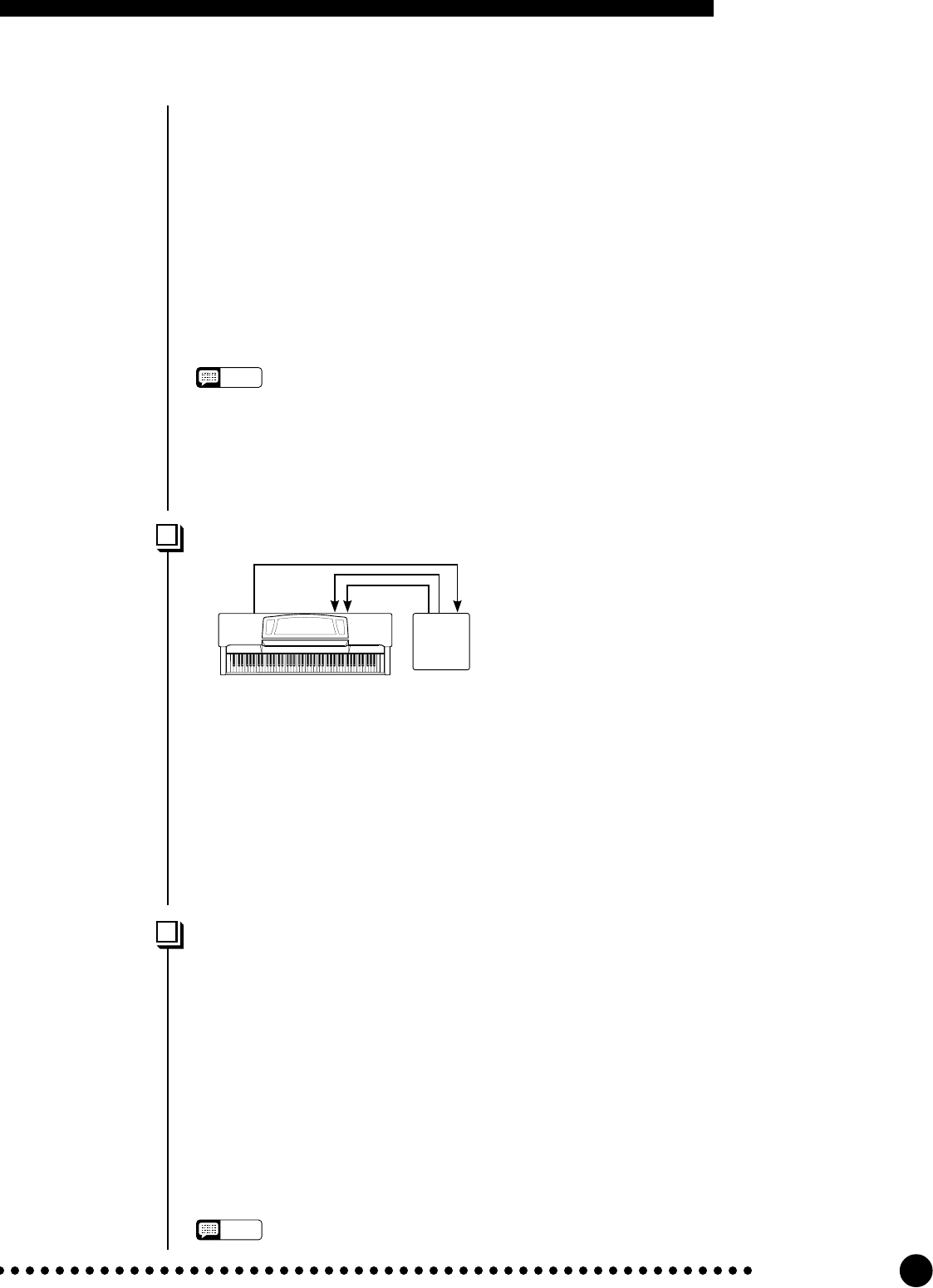
35
CLP-880/860/840/820/820S
The Function Mode
In any MIDI control setup, the MIDI channels of the transmitting and receiving equipment must
be matched for proper data transfer. A “Multi-timbre” receive mode is also available, which allows
simultaneous reception of different parts on all 16 MIDI channels, allowing the Clavinova to play
multi-channel song data received from a music computer or sequencer. There’s also a “1-2” mode
which allows simultaneous reception on channels 1 and 2.
Use the [–/NO] and [+/YES] buttons to select the desired transmit or receive channel. The
transmit channel parameter can also be turned “OFF” if you don’t want the Clavinova to transmit
any MIDI data. To select the multi-timbre receive mode, set the receive channel to “ALL”. Select
“1-2” for multi-timbre reception on channels 1 and 2 only.
Press the [–/NO] and [+/YES] buttons simultaneously to recall the default setting: transmit = “1”;
receive = “ALL”.
NOTE
• In the dual mode first voice data is transmitted on its set channel, and in the split mode right voice data is
transmitted on its set channel. In the dual mode second voice data is transmitted on the next greater channel
number of the set channel, and in the split mode left voice data is transmitted on the next greater channel
number of the set channel. In either mode, no data is transmitted if the transmit channel is set to “OFF”.
• Demo/piano song data and recorder playback data are not transmitted via MIDI.
• No MIDI reception occurs when the demo/piano song mode is engaged.
• Program change and other like channel messages received will not affect the Clavinova’s panel settings or
what is being played on the keyboard.
F7.3/F8.3: Local Control ON/OFF...........................................................................................................
“Local Control” refers to the fact that, normally, the
Clavinova keyboard controls its internal tone generator,
allowing the internal voices to be played directly from
the keyboard. This situation is “Local Control On”
since the internal tone generator is controlled locally by
its own keyboard.
Local control can be turned OFF, however, so that the Clavinova keyboard does not play the
internal voices, but the appropriate MIDI information is still transmitted via the MIDI OUT connec-
tor when notes are played on the keyboard. At the same time, the internal tone generator responds to
MIDI information received via the MIDI IN connector.
When using the DOU-10 Disk Orchestra Unit with the Clavinova, for example, Local Control
should be turned OFF when recording using the DOU-10 voices only, and ON when recording the
Clavinova voices while listening to playback of the DOU-10 voices.
Use the [–/NO] and [+/YES] buttons to turn local control “On” or “OFF”.
Press the [–/NO] and [+/YES] buttons simultaneously to recall the default setting “On”.
DOU-10
OUT PUT
R
L
AUX IN
L
RMIDI OUT
MIDI
IN
Clavinova
F7.4/F8.4: Program Change ON/OFF .................................................................................................
Normally the Clavinova will respond to MIDI program change numbers received from an exter-
nal keyboard or other MIDI device, causing the correspondingly numbered voice to be selected on
the corresponding channel (the keyboard voice does not change). The Clavinova will normally also
send a MIDI program change number whenever one of its voices is selected, causing the correspond-
ingly numbered voice or program to be selected on the external MIDI device if the device is set up to
receive and respond to MIDI program change numbers.
This function makes it possible to cancel program change number reception and transmission so
that voices can be selected on the Clavinova without affecting the external MIDI device.
Use the [–/NO] and [+/YES] buttons to turn program change transmission and reception “On” or
“OFF”.
Press the [–/NO] and [+/YES] buttons simultaneously to recall the default setting “On”.
NOTE
• For information on program change numbers for each of the Clavinova’s voices, refer to page 44 in the MIDI
Data Format section.


















